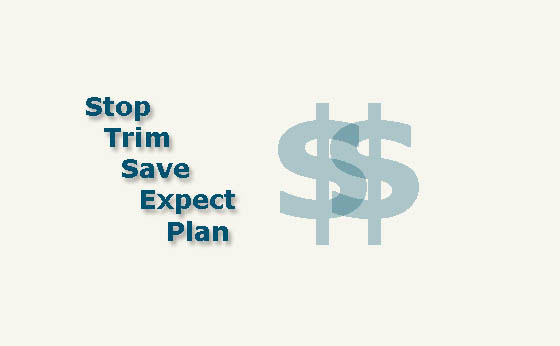5 Steps To Financial Survival

Financial survival is a legitimate aspect of modern survival. Striving for financial independence will lead you to freedoms you may have never known existed.
Even if you’re buried in debt, once you’ve made the decision to make your way out – ‘the process’ will be self-liberating and uplifting (even though it may take a long time to get there).
I wrote this 5 years ago during 2015. It is just as valid today. I’m republishing it for your benefit:
Five Steps To Get Started Towards Financial Freedom
Stop Borrowing.
Stop the bleeding. Regardless of your current debt, you must (I mean, must) stop sinking further in debt. You will not be able to change anything until you stop spending borrowed money. Period. It is THE most important first thing to do.
Trim Your Budget.
Be honest with yourself and your budget. Chances are that there are only one or two categories where you tend to break the budget. Think about it. You know what they are… Maybe you go out to eat too much. Maybe you buy too many new clothes. Maybe you spend too much on gadgetry. Whatever it is, the point is to simply STOP spending too much where you know it to be your weakness. It takes will power. Need versus want.
Save.
Even though there is relatively little interest paid on cash savings these days, this is no excuse not to save and you will miss out on one motivational technique while overcoming your debt burdens. As you begin to save a few dollars here and there, your motivation will grow as your ‘cash stash’ grows. Consider not utilizing ‘every’ extra dollar on paying off your debts. Instead use some of it to build up a savings of cash. Keep it at home where you can watch it grow (get a Safe).
Expect the Unexpected.
A common area where people tend to go into debt is in the category of emergency expenses. This is where having a savings of cash will provide some insurance against falling back into debt. Expect things to happen, things to break, such as the unplanned car expense or home appliance repair or replacement. Unexpected expenses ALWAYS happen. Save for them.
Plan for Future Expenses.
Rather than letting known future expenses catch up with you (which often send people back into debt), plan instead for them. Use simple math. If you know that you will likely need a replacement vehicle in about 2 years, and you are planning to purchase a used-car for say, $7,000, then $7,000/24 months equals nearly $300 per month that you need to save ahead of time. Budget for it. You must save for it – else go further into debt when you actually need it.
‘The system’ hides the true cost of many things while presenting it in terms of monthly payments.
It’s easy to get trapped into buying things when you figure you can afford ‘x’ dollars per month – while not fully understanding the full costs including interest payments over years, etc.. This is especially true with car loans. You rarely see the sticker price advertised in marketing – instead it’s about the monthly payments.
I believe that one of the big problems today is the lack of understanding that you cannot (should not) simply spend all of your paycheck or take-home income each month. Just because there might be a little money left over, doesn’t mean that it’s there to spend spend spend.
Remember that there will always be the probability that unexpected and perhaps significant expenses might slam you throughout life. You must plan for this by facing the reality that you need to set aside a portion of your take-home income for the future. This notion goes against the programming and marketing of ‘the system’ which deluges you with advertising and pressures to buy-buy-buy, however it is a false notion, one that will make you a debt slave – potentially forever.
